How to grow a butterfly garden: welcome these pretty pollinators to your space
Wondering how to grow a butterfly garden? Take a look at these planting and styling suggestions

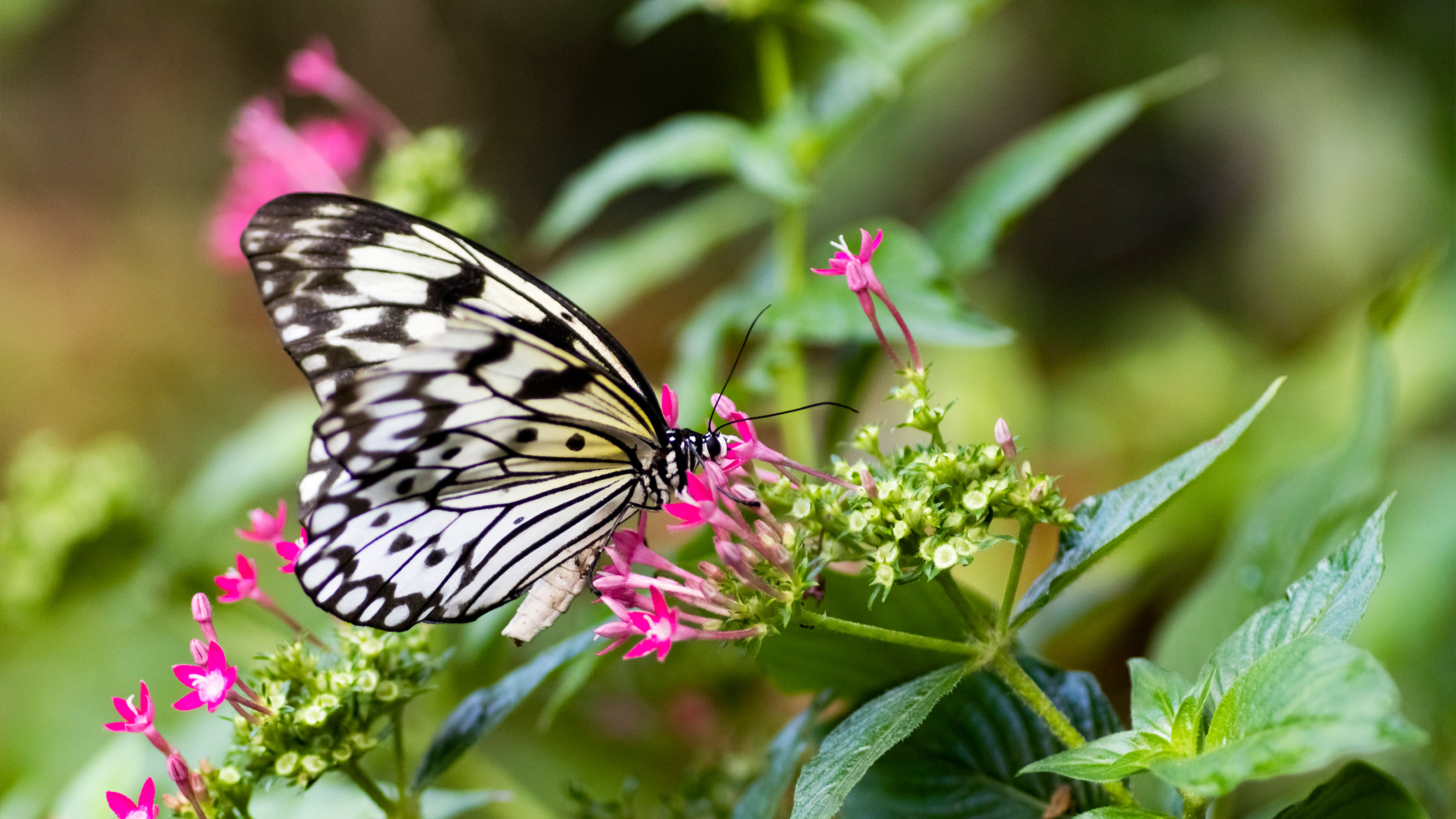
Learning how to grow a butterfly garden is a great way to bring more life and color into your outdoor space. And, it's not too tricky to do.
The sight of these jewel-like insects flitting around your flowers will make any plot feel more enchanting, for adults and children alike. What's more, welcoming more insects to your plot is great for educational purposes and to get back in touch with nature. Whether it's learning about the lifecycle as they grow from caterpillars, or simply discovering which species are native to your area, a lot can be gained when you encourage wildlife into your plot.
Of course, butterfly gardens look gorgeous too. Filled with colorful, nectar-rich blooms, they're a visual feast which fit right in with our sensory garden ideas.
So, to discover how to grow a butterfly garden of your own, keep reading. With a few planting picks and a bit of styling know-how, you'll be welcoming these pretty creatures to your plot in no time.
How to grow a butterfly garden: 8 tips to help you get started
1. Choose a sunny spot
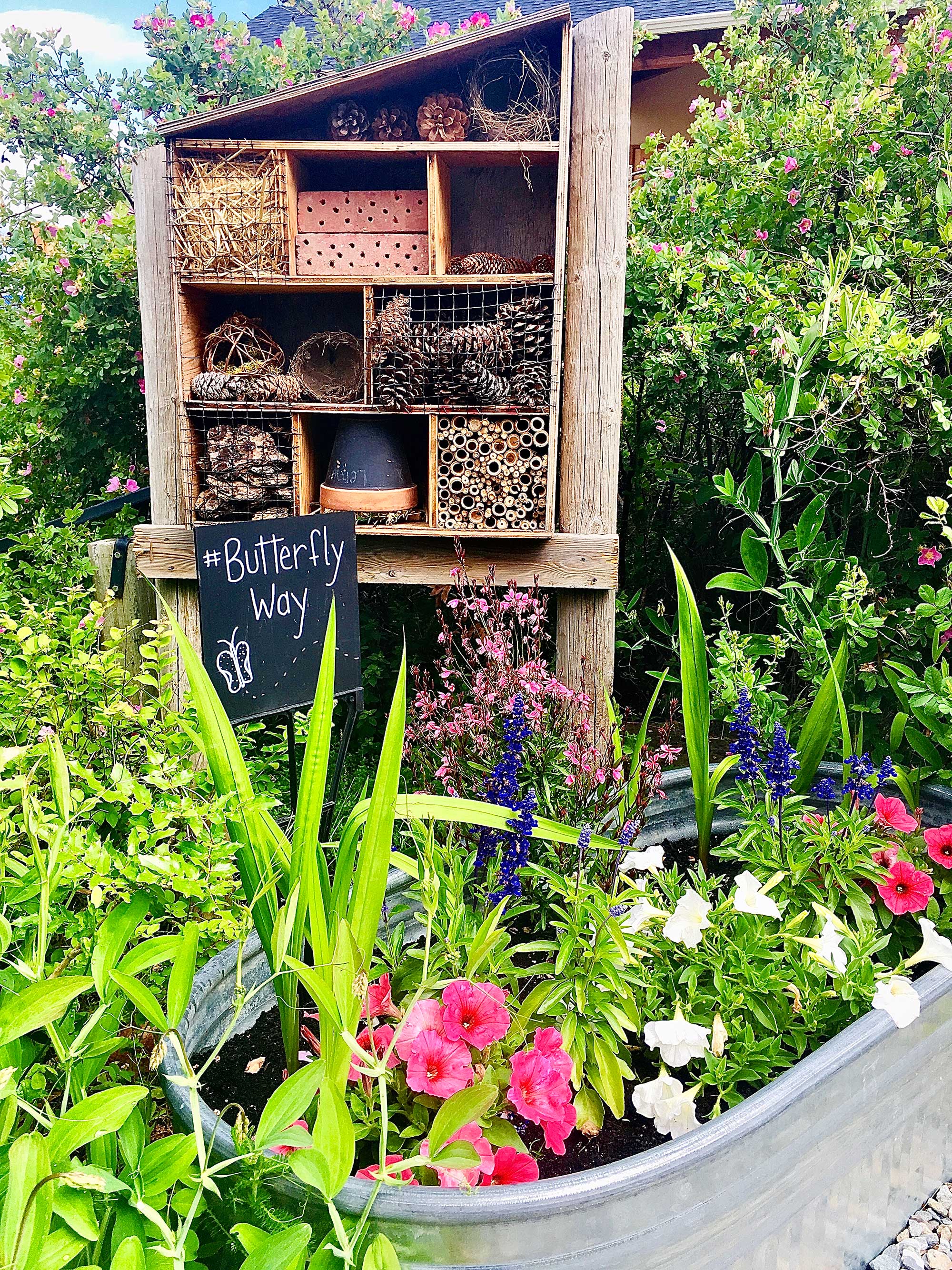
Wondering how to grow a butterfly garden? Well, first of all, you'll need to pick the right place. Whether it's a corner of your plot or a larger area, make sure it gets plenty of sunshine. And we mean plenty – eight hours or more is ideal.
You'll also need to make sure it's sheltered from high winds and bad weather. This could be near your garden wall ideas, for instance. You can provide further places to shelter by stacking up a pile of old logs, or, if you want to go the extra mile, the Woodland Trust have a useful guide on how to build a butterfly house.
If you want to encourage other insects too, take a look at our guide on how to make a bug hotel.
2. Go for a wild approach
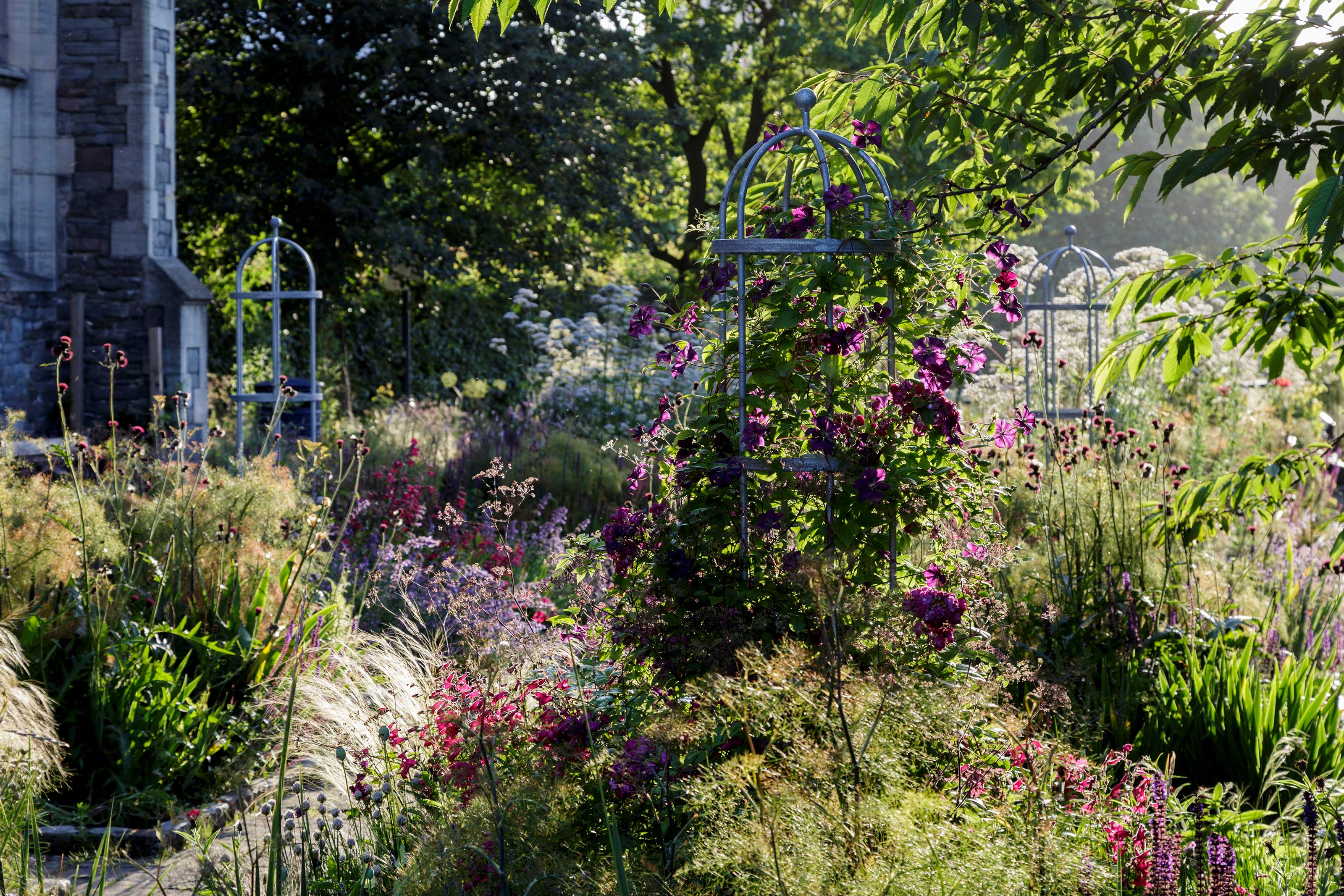
Don't be afraid to take a more natural approach when it comes to your butterfly garden.
The RHS suggests to include an open area that's full of grasses and wildflowers – as large a space as possible – which will provide a place for butterflies to lay their eggs. Opt for a spot where there is low soil fertility, they add.
Pretty wildflowers such as cuckooflower, forget-me-not, bird's foot trefoil, tufted vetch, red campion, and many others, are all well-loved by butterflies. To make things easy, look out for wildflower seed mixes specifically designed for butterflies – there are plenty available to buy. We've got more tips in our guide on how to plant a wildflower meadow.
It's also important to avoid the use of pesticides in a butterfly garden, and go organic instead. Pesticides can have chemicals which won’t just kill your slugs and snails – they can kill pollinators too.
3. Plant nectar-offering blooms in purple hues
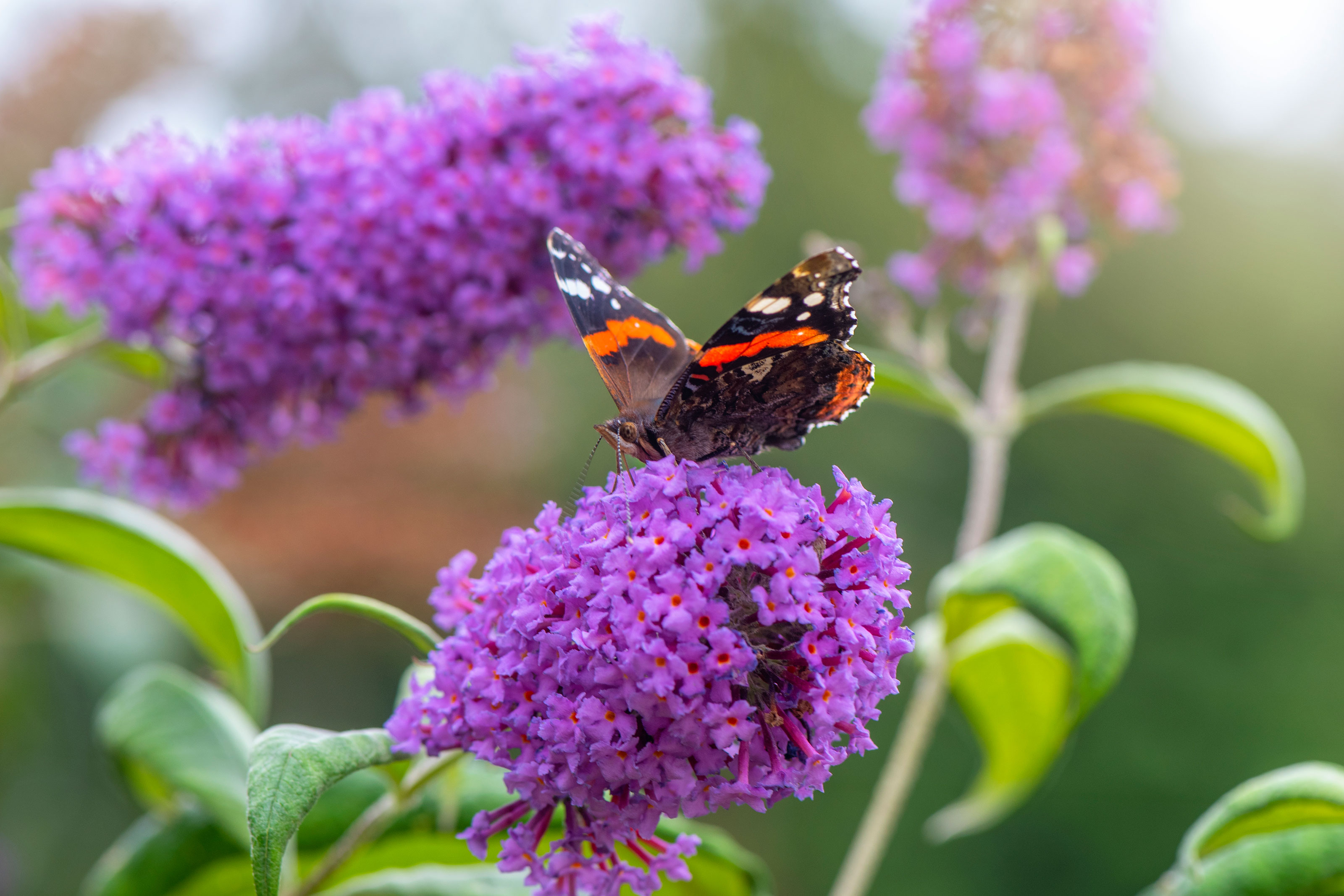
If you love a shot of sumptuous purple as part of your garden color schemes, then you're in luck. Butterflies adore many blooms in this shade.
The buddleja is a failsafe option as one of the best plants for butterflies – there's a reason why it's also known as the 'butterfly bush'. With it's cone-shaped clusters of purple flowers and honeyed scent, it makes a wonderful addition to a sunny butterfly garden. Just bear in mind that it's a vigorous grower, so give it an annual prune (generally in spring) to keep it in check.
Other purple-toned choices include Verbena bonariensis (a great choice if you're looking for tall, architectural stems), easy-care nepeta, structural alliums and echinacea, campanula (which looks lovely tumbling over stone walls), and Erysimum 'Bowles's Mauve'. Of course, lavender is a firm favorite amongst all pollinators too – take a look at our tips on how to grow lavender for your own garden.
Plant varieties en masse for maximum impact, but if you're short on space, you can try growing them in containers too. Cluster them together to recreate a wild and romantic feel.
4. Use cottage garden style planting
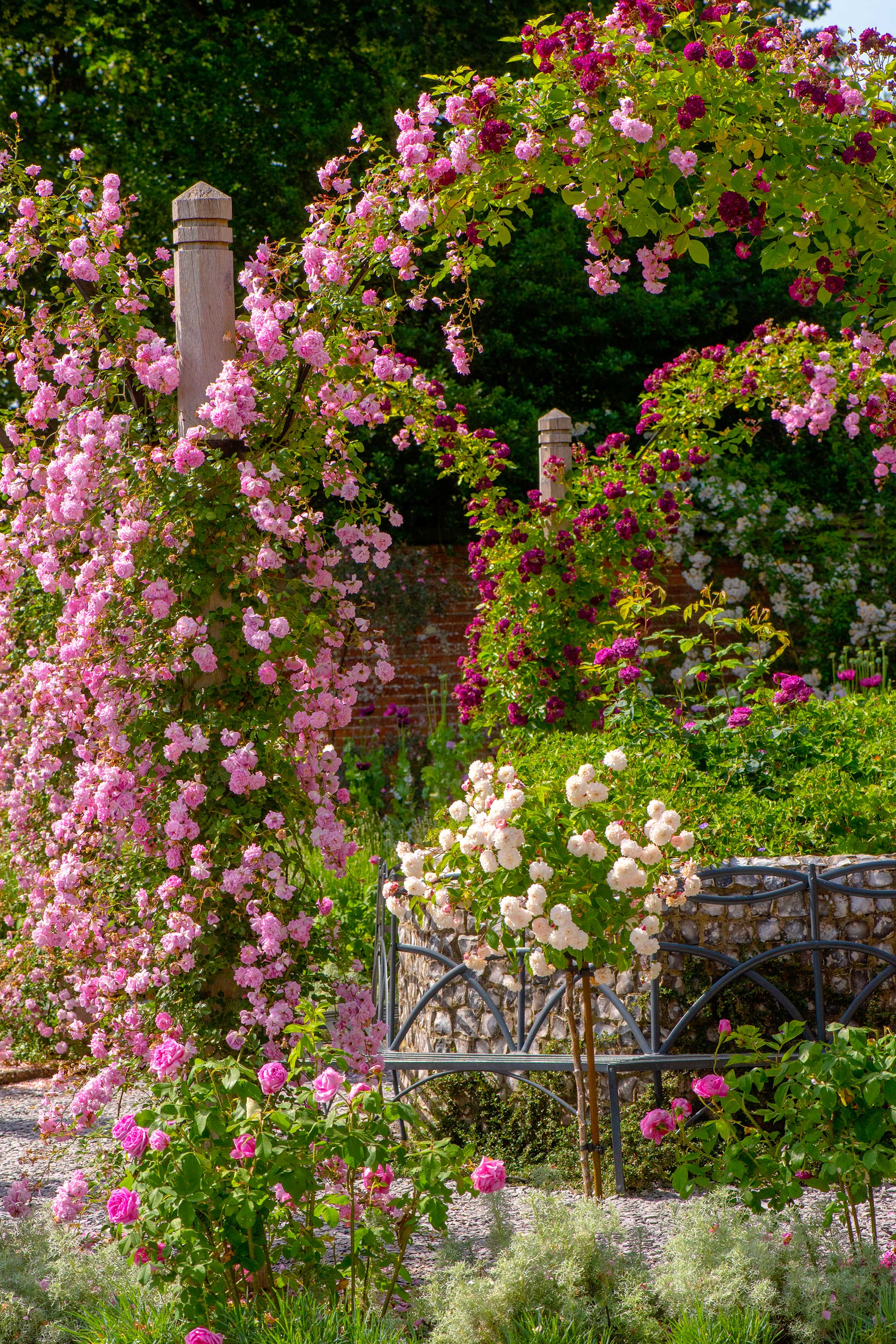
If you're a fan of cottage garden ideas, then you'll be pleased to know that the quintessential plants for this style make brilliant choices for butterfly gardens.
Roses and honeysuckle are always lovely additions to a garden and will fill your space with delicious scent throughout the warmer months. Train them over an archway, up a wall, or over a pergola for an extra dose of romance.
Other cottage garden favorites loved by butterflies include cosmos (an annual) and cranesbill geranium (perennial) – both are super easy to grow and provide a prolific display of blooms.
5. Provide flowers throughout the season
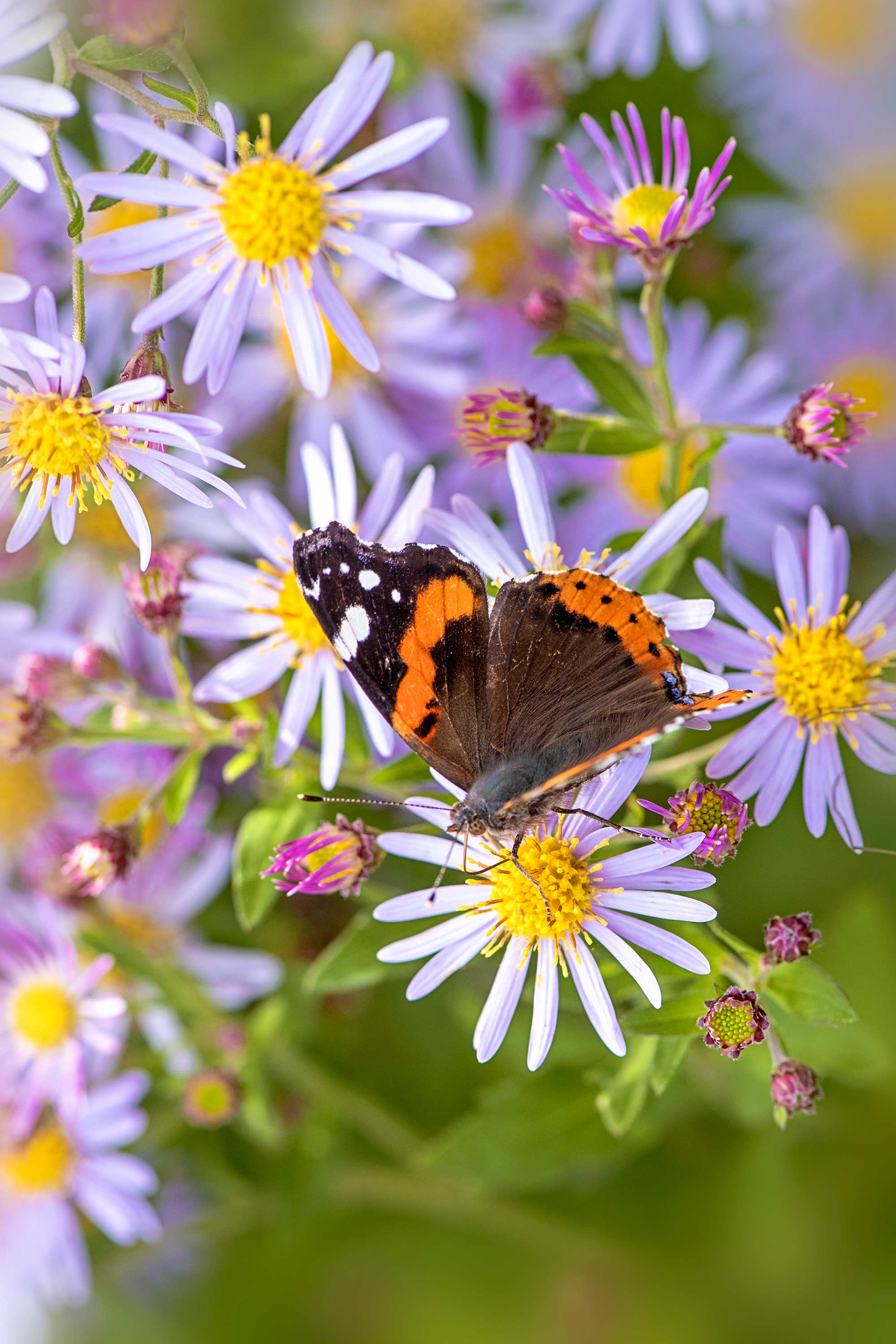
Aim to provide flowers from March to early November to get the most out of your butterfly garden, for both you and any visiting wildlife.
The soft mounds of aubretia and blossoming fruit trees are good choices for spring blooms. At the tail-end of the butterfly season, go for dahlias and asters, which can continue to flower right up until late autumn.
Remember to keep on top of deadheading, which can encourage new flushes of flowers. We've got useful guides on how to grow dahlias or the best flowering trees if you want to learn more.
6. Introduce water features
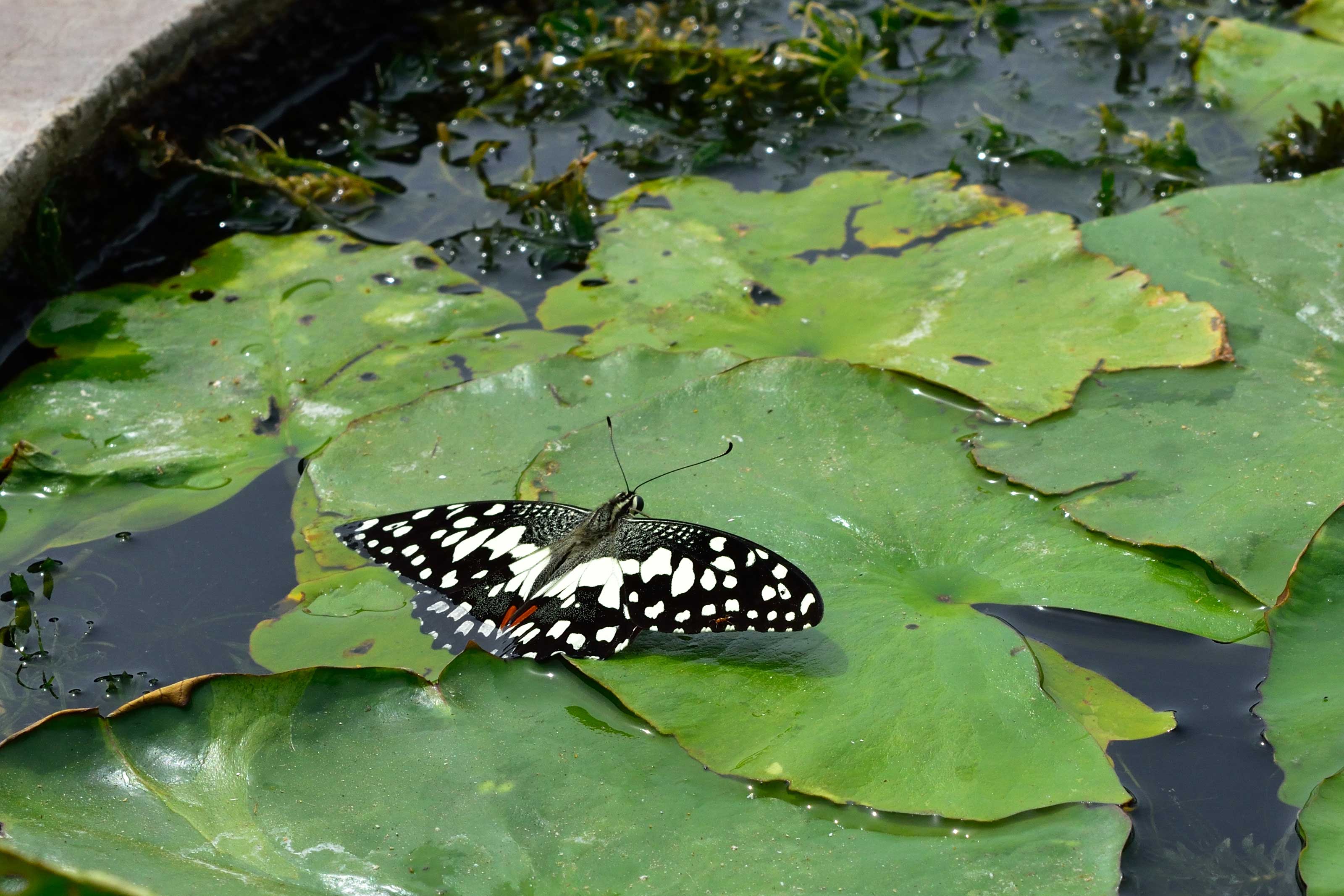
Any wildlife zone benefits from the addition of water, and butterfly gardens are no exception.
Ponds can welcome all kinds of life to your garden, including the likes of frogs and dragonflies. But when it comes to butterflies, look to offer shallower areas of water. This could be by adding water lilies to your pond – the wide leaves will collect pools of water and provide a sunny space for basking. Or, consider installing a bog garden around the edge of your pond – they offer an informal look, are great for wildlife and can be planted up with all kinds of interesting plants.
For a quicker way to offer respite to butterflies when the weather is hot and dry, try filling a small dish with wet sand or pebbles and water. Tuck it amongst your flowers in a sunny spot.
Looking for more inspiration? Take a look at our water feature ideas and our tips on how to build a garden pond.
7. Add flat stones for sunbathing
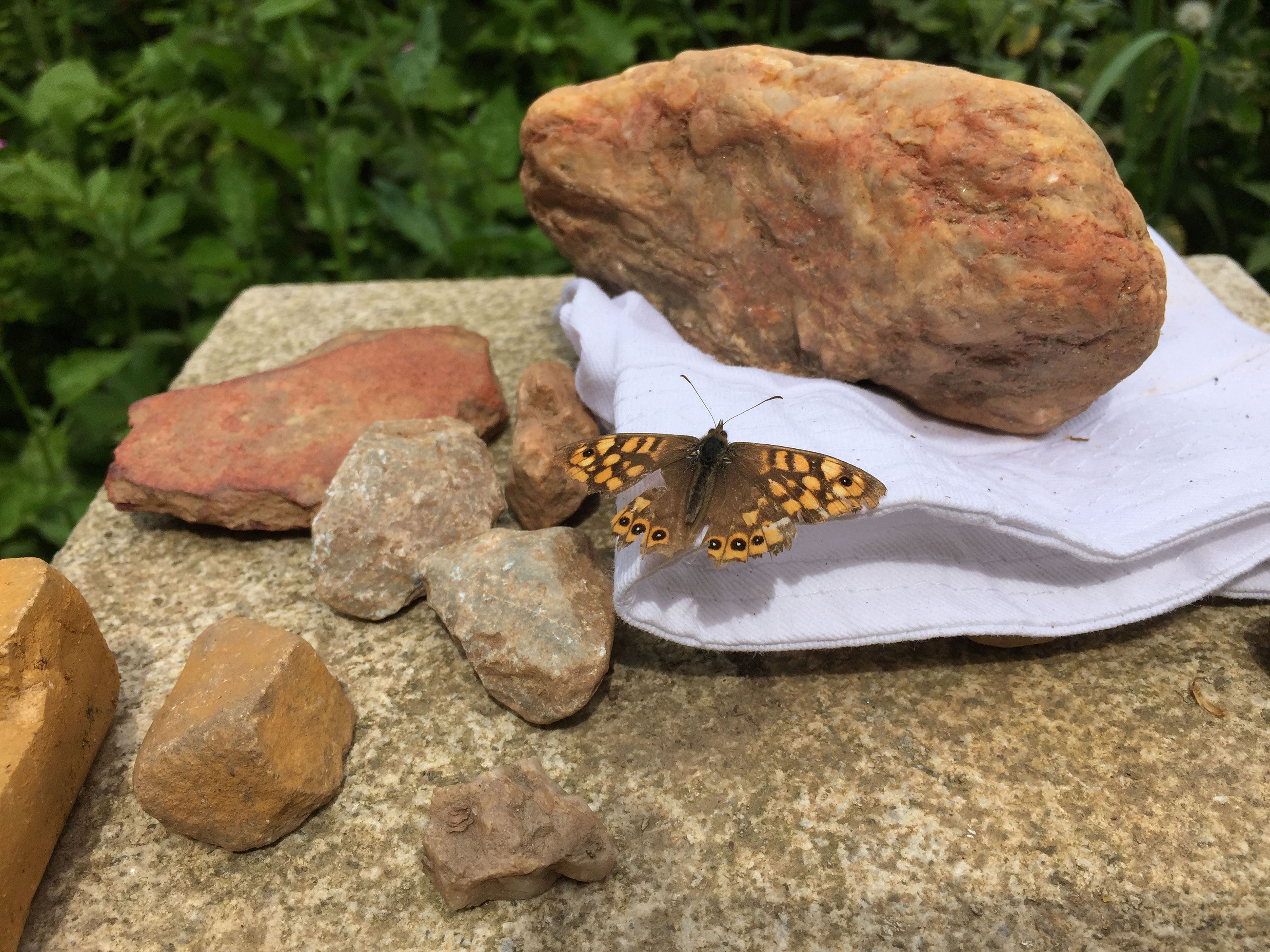
As we've mentioned, butterflies love the sun. Give them a place to rest and warm their wings by arranging a few flat rocks in your butterfly garden. Put them along the top of a low garden wall, or simply stack a few on the ground near your flowers.
What's more, rocks add visual interest and a naturalistic feeling to a plot. If you like the effect, why not take a look at our small rock garden ideas, too?
8. Get to know your native butterflies
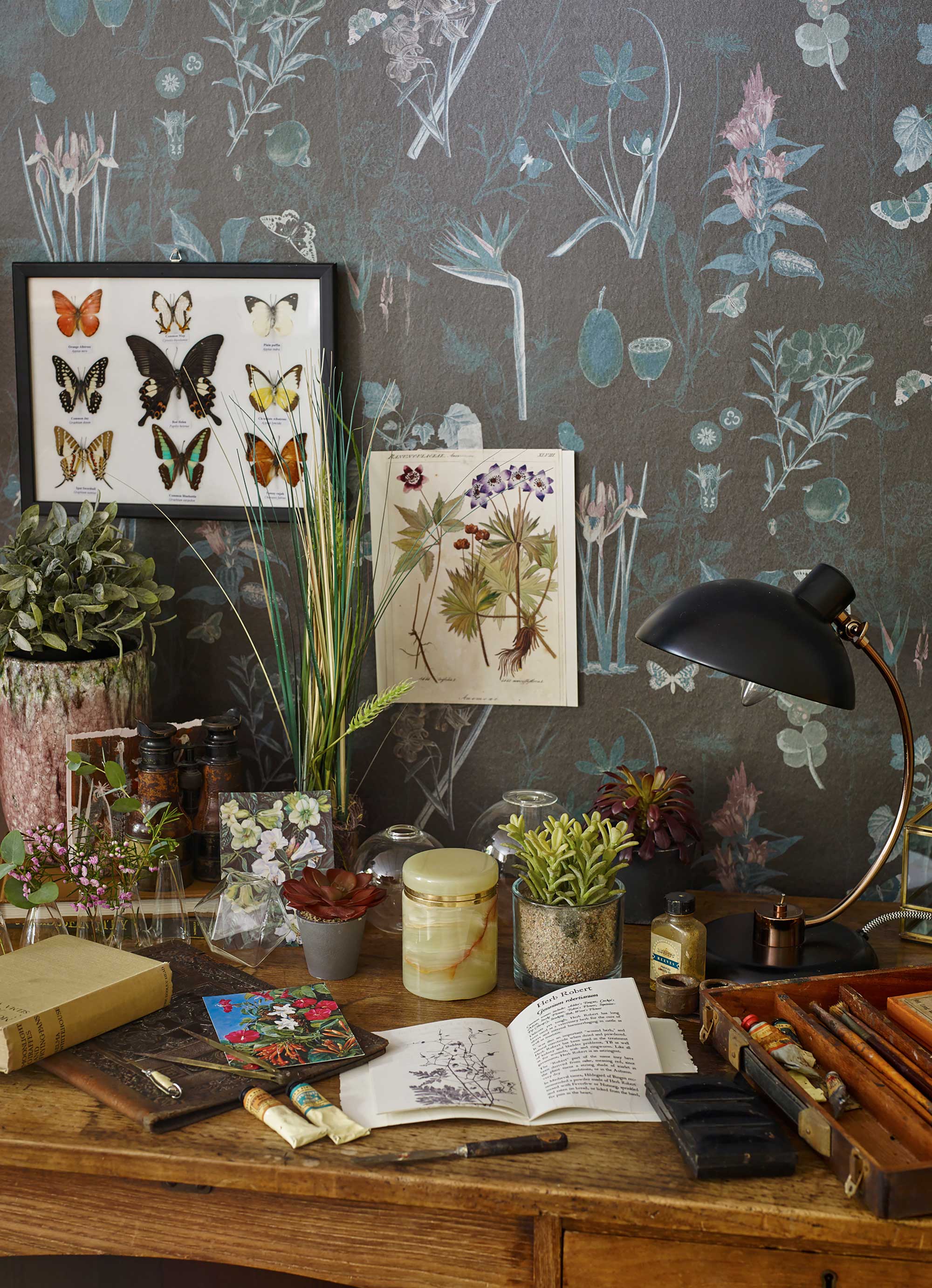
When considering how to grow a butterfly garden, it's always a good idea to spend time researching the native species to your area.
Firstly, this is because different plants attract certain butterflies when it comes to where they lay their eggs. So, knowing which varieties are local to you can help you pick the best plants for your plot.
These plants are known as 'larval food plants', as they provide the caterpillars with sustenance once the eggs have hatched. For instance, the RHS says that bird's foot trefoil is preferred by the caterpillars of the Common Blue butterfly, whilst large patches of stinging nettles can host the caterpillars of Red Admiral, Peacock, and Small Tortoiseshell varieties. Holly and ivy are the plant preference for Holly Blues.
What's more, knowing the kinds that you are likely to spot in your garden will add even more joy when they do come to visit. Make a list and tick them off as and when you see them – it's a great activity for all the family to get involved in. And if you're looking for more garden activities for kids, take a look at our guide.
Why is a butterfly garden important?
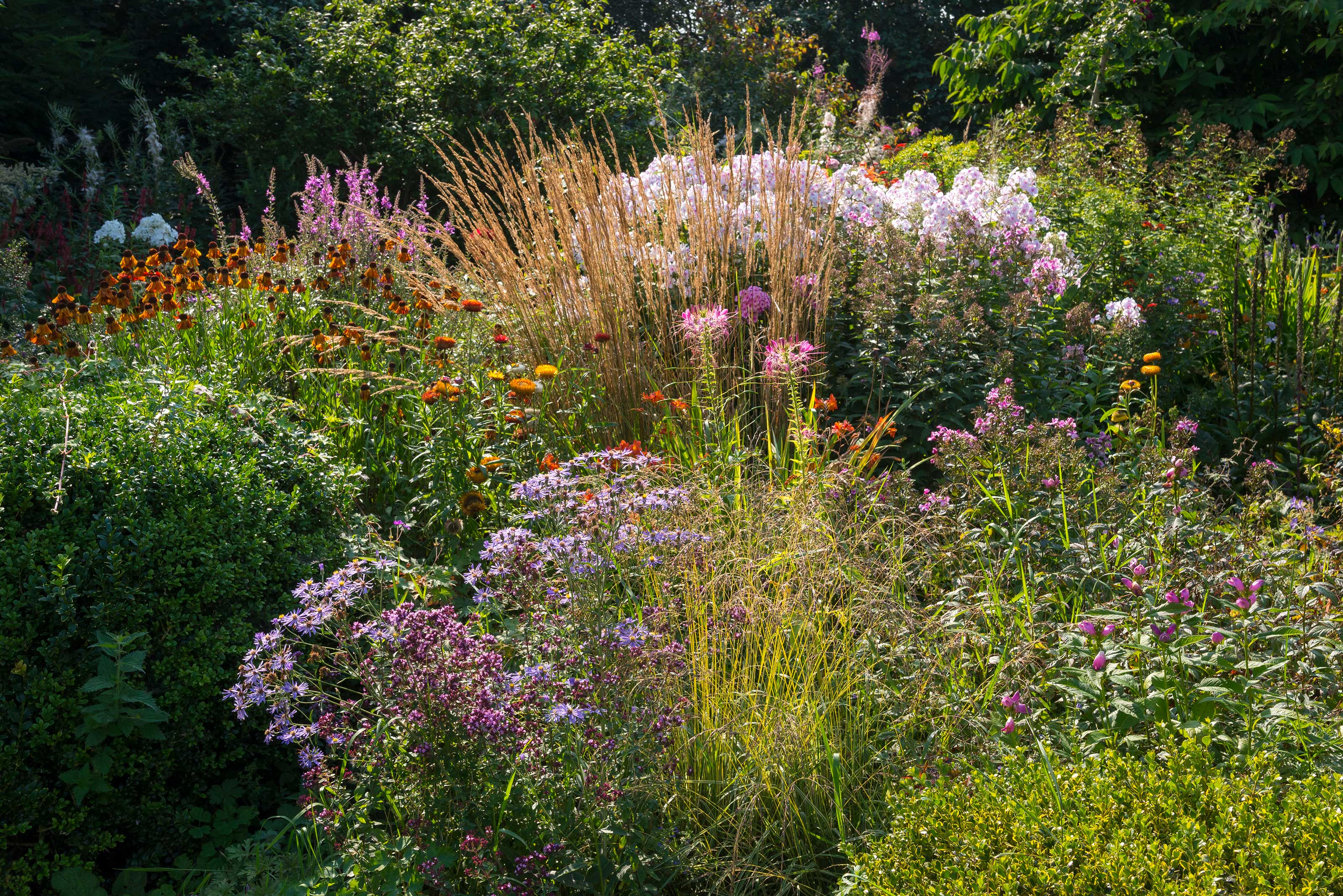
Learning how to grow a butterfly garden is important for many reasons.
According to the Butterfly Conservation, butterflies have been around for at least 50 million years. However, three-quarters of British butterflies are in decline. Sadly, a few species are now extinct, mostly due to natural habitats being destroyed on a mass scale. Creating a safe space to allow them to lay eggs, shelter, and feed helps to make up for their lost homes in the natural environment.
What's more, environmentally, butterflies are a crucial part in the food chain, and they are also strong indicators for healthy ecosystems. Educationally, they teach us about the lifecycle – the process of metamorphosis is fascinating for all ages. Of course, they look beautiful too, and watching them fly from bloom to bloom is a relaxing, mindful experience that does wonders for our wellbeing.
What month do butterflies come out?
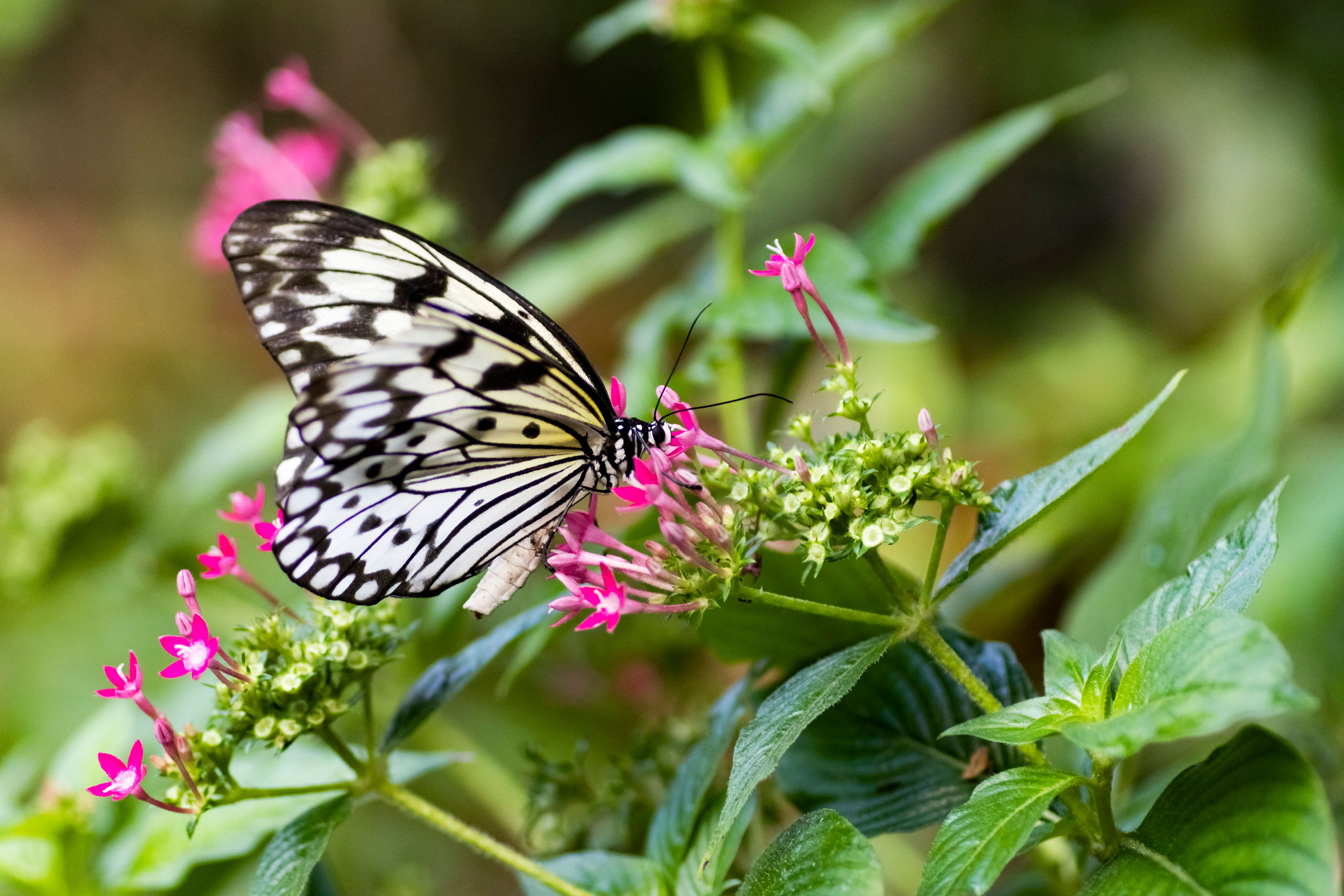
Butterflies can be seen as early as March, when the weather begins to warm. This is often the case with species that hibernate over winter, such as the Peacock. As the season continues, more and more butterflies will spring into action. Summer is peak butterfly season, with the likes of Red Admiral and Common Blue emerging in May right up until October.
That's why, when learning how to grow a butterfly garden, it's a good idea to provide plants that will flower throughout the entire butterfly season.
Want more inspiration? Head over to our wildlife garden ideas feature.

The garden was always a big part of Holly's life growing up, as was the surrounding New Forest where she lived. Her appreciation for the great outdoors has only grown since then. She's been an allotment keeper, a professional gardener, and a botanical illustrator – plants are her passion.
